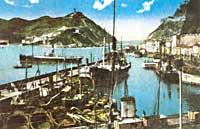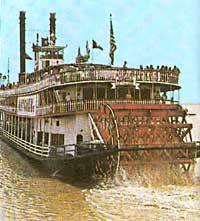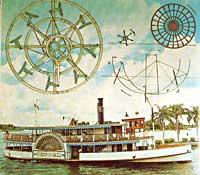Naval History IX: Expansion of Vapors

Robert Fulton's Clermont steamer left New York on August 17, 1807 and the next day arrived at the port of Clermont City, after traveling 180 kilometers. Then he left and in eight hours he got to the port of Albany. At twenty-one hours, New York and Albany were joined by this steam. Thirty more hours passed from Albany to New York.
He dedicated himself to repeated trips between Untzia, New York and Albany. Steam navigation was already born.
The Clermont was renewed and extended the following year, in order to better meet the demand of the people. However, new vapors were also made in North America. Rariton, Car of Neptune and especially Livingston, achieved great fame. These vapors moved back in other lines.
For the first time in Europe the steam transport service was installed in the Scottish Bay Clyde. The steam manufactured by John Robertson had four wheels driven with a three-horse engine, and in August 1812 began to transport people between Glasgow and Greenok.
In 1818, David Napier joined Holyhead and Dublin through steam Rob Roy. This boat had two wheels driven with 30 hp engine.
In France the vapors expanded shortly afterwards. It was built in 1816 by the Marquis of Jouffroy to travel the Seine River, but in 1828 in France there were already 71 steamers, of which 13 were tugboats.
Vapors abounded in Britain. In 1824 there were 150 boats and in 1835 there were 500.
The English Channel was first crossed by a steam in 1816. General Pierre Audriel and General Rajol bought a ship called Margery, which they called Elisa. That 70-ton steam engine of 13 horses, departed on March 17 from Newhaven to Paris. On the way, she was surprised by storms that, after great avatars, ended in the port of Le Havre, making a journey of 17 hours. When they arrived in Paris on March 29, people gathered to applaud the passengers and the boat.

That same year, the British ship Majestic transported 200 passengers across the canal, and some later the other two English vapors (Caledonia and Lady of Lake) joined Britain with Germany.
In 1821 they established a permanent connection between France and Britain. Steamer Rob Roy, who was traveling to Ireland, began working on the Dover-Calais line. I was traveling 24 hours and 45 minutes in good weather.
Years later, in 1826, the line between London and Amsterdam premiered, and in 1836, a special service between Folkesto and Boulogne. The trains coming from London came in and then, arriving by sea at Boulogne, put them back on the railroad. Thus, the railway extended from London to France.
The Atlantic Ocean was first crossed in 1819 by the Savannah steam. The journey between New York and Liverpool took place between 25 May and 22 June. The boat had three masts and a steam engine. Captain Moses Rogers was the driver of Savannah, and although more than half of the trip was made because of the engine, the rest was forcibly sailed at the end of the fuel.
From Liverpool, the ship departed to Copenhagen, Stockholm and St. Petersburg, waiting for someone to buy steam in Europe. Lacking buyers, Captain Rogers returned to America, crossing the Atlantic Ocean again.
Trips to India began later. The vapors needed a lot of coal and when the trip was long it was necessary to disembark and take fuel.
However, on August 16, 1825, Captain Johnston departed at the orders of the Enterprise vessel, with 500 tons of merchandise and 400 tons of coal. The steam, with two engines of 60 horses, arrived in Calcutta on December 9. Meanwhile, he caught coal at Punta de Buena Esperanza. Although the trip took place in 103 days, the engines did so for 64 days.
The first steam in Spain went to work in Seville on 8 July 1817 on the Seville - Sanlucar de Barrameda line.

Around 1830 many attempts were made to improve the propulsion of the vessel, but the most important step was to replace the paddle wheel with a propeller.
In 1836, the British Francis Petit Smith of Hendon designed and manufactured the propeller. He put it on a small six-ton boat with good results.
The British Admiralty asked him to rehearse on larger ships. For this purpose the ship Archimedes of 200 tons is given. Smith put an engine of 80 horses and a propeller. In its sessions, the ship reached a speed of 9 miles/hour and toured the English Channel and the North Sea.
That same year, in 1836, the Swede Ericson managed to introduce in America the propeller of his country. It was very similar to what Smith invented.
Since then the propeller extended more and more to commercial ships. Wheel steamers with paddles remained on the waterlines and completely disappeared shortly before the Second World War.
Buletina
Bidali zure helbide elektronikoa eta jaso asteroko buletina zure sarrera-ontzian











